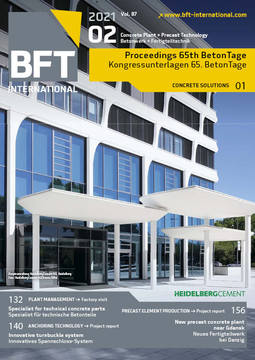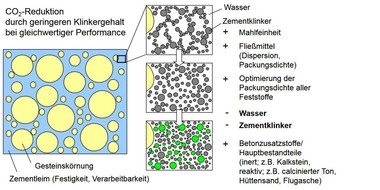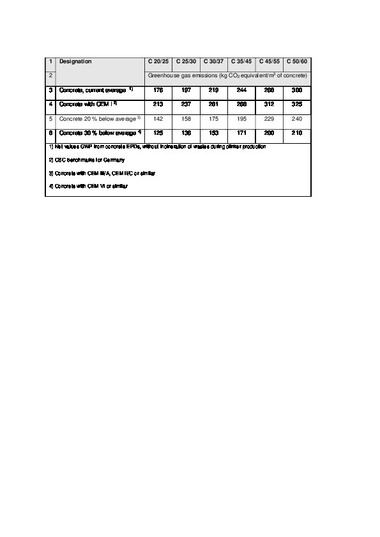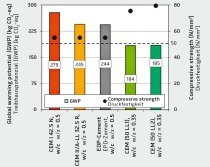Caught between availability of resources and durability
Concrete construction is currently still responsible for approx. 5 – 7 % of global greenhouse-gas emissions. A noticeable reduction of these emissions can be achieved by reducing the Portland cement clinker content in the cements. Based on the experience made with existing composite cements, the standards are now extended to include new clinker-reduced cements such as CEM II/C-M und CEM VI. Availability
of reactive interground additions, for example, flyash or granulated
blast-furnace slag is changing, resulting in increasing use of limestone
as the main component in the cement to reduce clinker. Development of CEM II/C with a minimum clinker content of 50 % offers adequate performance for its use in high-volume concrete formulas. When considering resources availability and the need for CO2 reduction, dropping the “one-fits-all” principle (one cement for concretes of all exposure classes) could be a solution-focused approach. Dyckerhoff
has obtained the relevant generaltechnical approvals for CEM II/C-M
(S-LL) cements from the German approval body for construction
products (DIBt). At the end of 2020 they were first used in ready-mixed concrete to gain experience on the interaction between admixtures
and the combined use with other cements.







